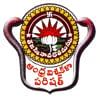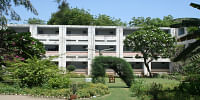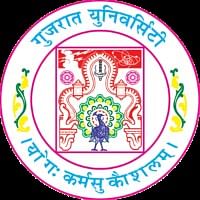BPA Syllabus and Subjects

The BPA course assists students in developing their practical understanding and skills so they can excel in the Performing Arts, such as Dance, Theater, and Music. The courses are divided into six to eight semesters that deal with providing a solid understanding of the practice and theory in the field of Performing Arts. BPA courses emphasize performance and leadership which helps students' confidence, communications skills, and potential for productive collaborations.
Semester Wise BPA Syllabus
The BPA course syllabus has major subjects such as Basics of Structure, Hypothesis of Design, Systematic Drawing, and much more. The elective subjects include Journalism, Dance and Music, and much more. The BPA course subjects covers a wide range of topics and is divided into six to eight semesters. The semester-by-semester BPA subject list is listed below:
BPA First Year Syllabus
The table below contains the list of BPA subjects in the first year:
| Semester I | Semester II |
| Raga Studies | Analytical Study of Indian Classical Music |
| Fundamental Study of Hindustani Music | Elementary study of Hindustani Music |
| Fundamental Study of Tala | Western Music |
| Intensive Study of Raga | Elementary Study of Tala |
| Folk Music | Tala Studies |
| Rabindra Sangeet | Raga Studies |
| Analytical Study of Tala and Shastra | - |
BPA Second Year Syllabus
The table below contains the list of BPA subjects in the second year:
| Semester III | Semester IV |
| History of Dance | Indian Culture |
| New Media & Performance Practice | Movement Techniques |
| Technique of Dance | Mudras |
| Choreography | Chandas |
| Dance on Camera | - |
BPA Third Year Syllabus
The table below contains the list of BPA subjects in the third year:
| Semester V | Semester VI |
| Introduction to Indian Theater | Film Theories |
| Indian Culture and Art | Folk Theater Forms of India |
| History of Indian Theater | Basic Concepts of Film Making |
| Theatre Production | Stagecraft and Design |
| Body Movement and Dance | Theory of Direction and Stagecraft Direction |
| Basics of Vocal Practice | History of Western Theater |
| Basics of Camera Light and Sound | Script Writing |
BPA Subjects
BPA subjects covers a wide range of subjects and syllabi that are essential for aspirants to learn over the course of three to four years. The following is a list of BPA subjects:
BPA Core Subjects
The core BPA subjects list of essential subjects that all BPA students study, is as follows:
Music:
- Raga Studies
- Fundamental Study of Hindustani Music
- Fundamental Study of Tala
- Intensive Study of Raga
- Folk Music
- Rabindra Sangeet
- Analytical Study of Tala and Shastra
- Analytical Study of Indian Classical Music
- Elementary study of Hindustani Music
- Western Music
- Elementary Study of Tala
- Tala Studies
- Raga Studies
Dance:
- History of Dance
- New Media & Performance Practice
- Technique of Dance
- Choreography
- Dance on Camera
- Indian Culture
- Movement Techniques
- Mudras
- Chandas
Theatre:
- Introduction to Indian Theater
- Indian Culture and Art
- History of Indian Theater
- Theatre Production
- Body Movement and Dance
- Basics of Vocal Practice
- Basics of Camera Light and Sound
- Film Theories
- Folk Theater Forms of India
- Basic Concepts of Film Making
- Stagecraft and Design
- Theory of Direction and Stagecraft Direction
- History of Western Theater
- Script Writing
Practicals:
- Dance sessions
- Music sessions
- Theatre session
BPA Course Structure
Bachelor of Design in Performing Arts is a three to the four-year course with six to eight semesters. The BPA course structure is designed to provide students with all of the necessary and relevant information to become successful in the field of Performing Arts. The subjects in the BPA course teach not only theoretical knowledge but also practical and interpersonal skills that are necessary. The following is a breakdown of the BPA course structure:
- VI Semesters
- Core Courses
- Practicals
- Seminars
- Project
BPA Teaching Methodology and Techniques
BPA has its own set of teaching methodologies and techniques. Subjects are carried out with Practical classes so that students can get a clear picture of what is being taught to them. Practical sessions and seminars give students hands-on exposure to a variety of tools and technologies, allowing them to gain a thorough understanding of Performing Arts techniques. This leads to gaining theoretical and practical knowledge of the course. The following are the various teaching approaches used in the BPA course:
- Practical sessions
- Seminars
- Regular Lectures
BPA Course Projects
Through project-based learning, the BPA programme focuses on offering professional training in the field of Performing Arts. Working on projects is primarily intended to ensure that students understand the concepts from beginning to end. The following are some of the most common BPA projects:
- Assessment Of The Use Of Cosmetology In the Video Film Industry
- Audience Perception Of Media Coverage And Management Of The 2011 Post-Election Violence
- The Imperative Bollywood Phase of Theatre Actors
- Nepotism in Bollywood culture?
- The fading Indian Nautanki Culture, where is it?
BPA Course Books
The BPA books give students an in-depth study of their area of concentration in addition to providing a foundational understanding of the course. Students can access the textbooks for the course both online and offline. Students can make an informed decision by thoroughly understanding the course requirements by downloading the course details prior to enrolling in the course. The following are the reference books for the BPA syllabus:
| Name of Book | Author |
| Theatre and Everyday Life | Alan Read |
| Dance Kinesiology | Sally Sevey Fitt |
| What's the Story: Essays about art, theatre and storytelling | Anne Bogart |
| The moving body: teaching creative theatre | Jacques Lecoq, and Jean-Gabriel Carasso |
















